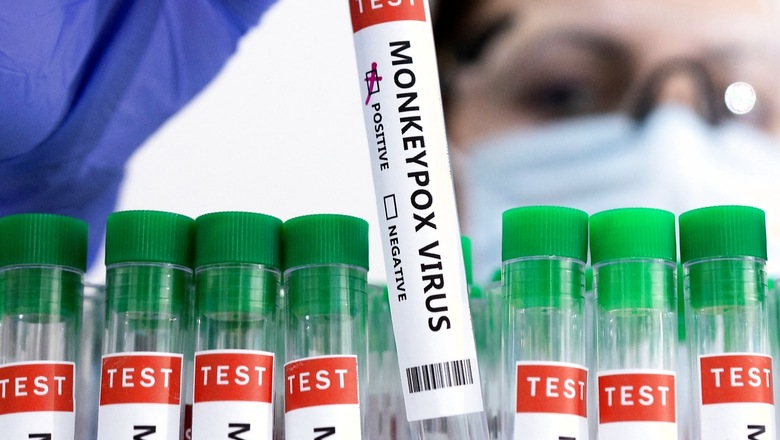
views
The general population need not worry about the monkeypox infection, India’s top virologist and vaccine expert Dr Gagandeep Kang told News18.com.
India has reported nine cases of monkeypox, so far – five from Kerala and four, including a 31-year-old woman from Nigeria, from Delhi, and one death.
“Despite the fact that we have seen few deaths due to monkeypox infection, we need to do a deep dive into the cases to understand a bit more," Dr Kang, also a Professor of Microbiology at Christian Medical College in Vellore, said.
In some cases, she said, the deaths have been caused by viral encephalitis, which is a known but unpredictable reason for causing the death of the host. Other deaths were in people with cancer or HIV.
“With every virus, not only the monkeypox infection, there are chances of encephalitis."
Viral encephalitis is an inflammation of the brain caused by a virus and its most potential complication is permanent brain damage.
Kang, who is the first Indian woman scientist to be picked as a Fellow of London’s Royal Society, further added that “there is a pattern of spread (of monkeypox) around the sexual networks at this time, although monkeypox spreads more because of skin-to-skin contact".
“While we know that monkeypox is, before and now, not just along sexual networks, but in many situations of close contact, given the pattern now, we have a clear need to trace the known sexual contacts of the patients. Otherwise also, extensive contact tracing is a very important tool, as it was in Covid-19."
According to her, extensive tracing will figure out the chain of transmission, and “the more you find early, the fewer chances of spread – something we learnt in the early days of Covid-19 and many other outbreaks".
“Hence, the trick is “over-testing" and in that case, if we find that out of 300 tests only one or two infections are caught, there is no reason to worry because its unlikley to be wide-spread."
“The good thing is the disease is much, much less infectious than the SARS-CoV2 and hence, the chances of control are better."
SHOULD WE RUSH TO FIND VACCINES?
According to Kang, who is a noted vaccinologist, supporting the development of vaccines is always a good idea as the process helps understand the science better but here, she believes that “we are just at the beginning of understanding this virus".
“We know that smallpox vaccines protect against monkeypox infection, as well. However, we must also recall that smallpox vaccines also have significant side effects apart from the benefits."
Kang, who has several achievements in the field of vaccines, including playing an important role in the development of India’s indigenous rotavirus vaccine, said that “small pox’s vaccine ‘Jynneos’ was made to be safer vaccine when compared to other products".
“For all smallpox vaccines, there are rare but serious side effects, including eczema vaccinatum, which leads to extensive rashing, boils on the skin, and systemic illness."
Considering that such vaccines have been known to cause significant side effects, having a vaccine for monkeypox is not as simple as it may sound.
“With SARS-CoV-2, we knew that the spike protein was very important, and including that in the vaccines would be enough to provide protection. However, for smallpox and monkeypox, we use a whole virus vaccine with known side effects."
“Therefore, the safety bars should be greater than for SARS-CoV-2 vaccines."
Unlike Covid-19, the vaccination requirement and approach will be very different.
Hence, here, unlike Covid-19, she advised, “We cannot administer these vaccines indiscriminately as we need to balance risk and benefit."
“However, the good news is that the disease itself is very rare, and self-limiting and most people might never need vaccines for monkeypox."
FRESH COVID SPIKE NOT A CONCERN
According to the ongoing study in CMC-Vellore led by Dr Jacob John, where a cohort of 1,200 people is being studied on weekly basis starting July 2021, there is a trend of slower, but consistent increase in infection in the past four to five weeks, which stood anywhere between 1% and 3%. “The climb and the decline have been much slower than for Omicron. A rate of 3% means if you meet 30 people, one of them is infected," Kang noted.
During the Omicron wave last winter, the same people were studied and reported a sharp increase in the number of infections followed by a sharp decline over a period of six weeks. During the Omicron wave, around 50% of the cohort caught the infection.
The reason for the increase in cases is likely the new variants, mostly BA.5, and the fact that there is immune escape by these variants, she pointed out.
However, the scientist believes, “There is no need for concern as the majority of the population is double vaccinated and witnessing minor symptoms."
Read the Latest News and Breaking News here

















Comments
0 comment